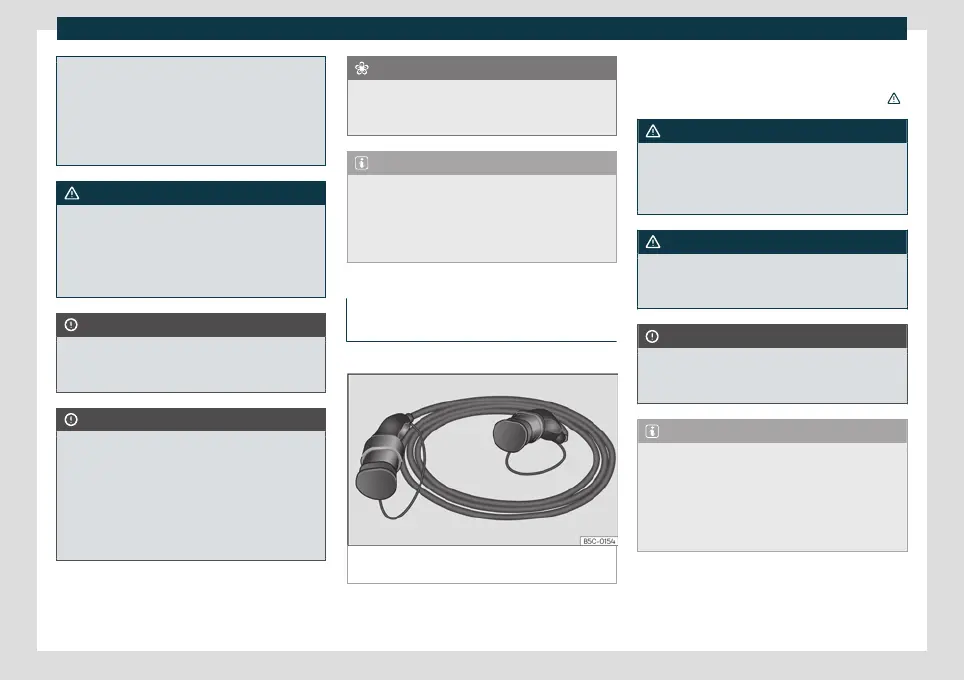High-voltage battery
result in fire damage and damage to the
charging cable or home electrical inst
alla-
tion.
●
Never connect the charging cable to an
extension lead, cable reel, power strip or
adapter or timer.
WARNING
The high voltage system voltage is danger-
ous and can cause burns, other injuries and
fatal electric shocks.
●
Only clean the charging cable when it is
unplugged.
CAUTION
The charging cable, as portable electrical
equipment, may have to be checked peri-
odically. This requires a test adapter.
CAUTION
The charging cable can be damaged if not
cleaned properly.
●
Only water should be used for this pur-
pose, and never additional cleaning prod-
ucts.
●
Water should be prevented from getting
into the contacts.
For the sake of the environment
Charging cables must be disposed of in an
environmentally friendly way and should
not be thrown in the household waste.
Note
The maximum charging capacity of the
safety circuit that is used must be observed.
If the charging cable is planned into an
electrical socket on the same circuit as oth-
er consumers, the circuit's fuses may trip.
Charging cable for alternating current
(AC) charging stations
3 Valid f
or: hybrid vehicles
Fig. 193 Charging cable for alternating current
(AC) charging stations.
The maximum charging current is 16 or 32
amp
s, depending on the v
ehicle’s features
and the charging cable that is supplied
›››
.
WARNING
Charging the high-voltage battery with an
inappropriate charging cable could cause
short circuits, serious injuries and fatal
electrical shocks.
WARNING
The charging cable should not be used as
an extension lead. The charging process
could be affected.
CAUTION
Follow the manufacturer’s instructions and
indications when using the charging sta-
tion.
Note
Charging with a 16 A charging cable is not
possible in some charging stations that
support 32 A. This depends on the features
of the charging station.
●
Before charging the vehicle, find out
about the available charging technology.
309

